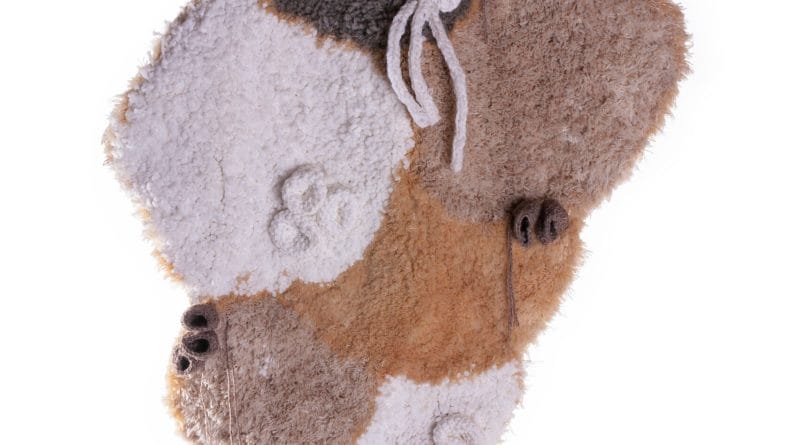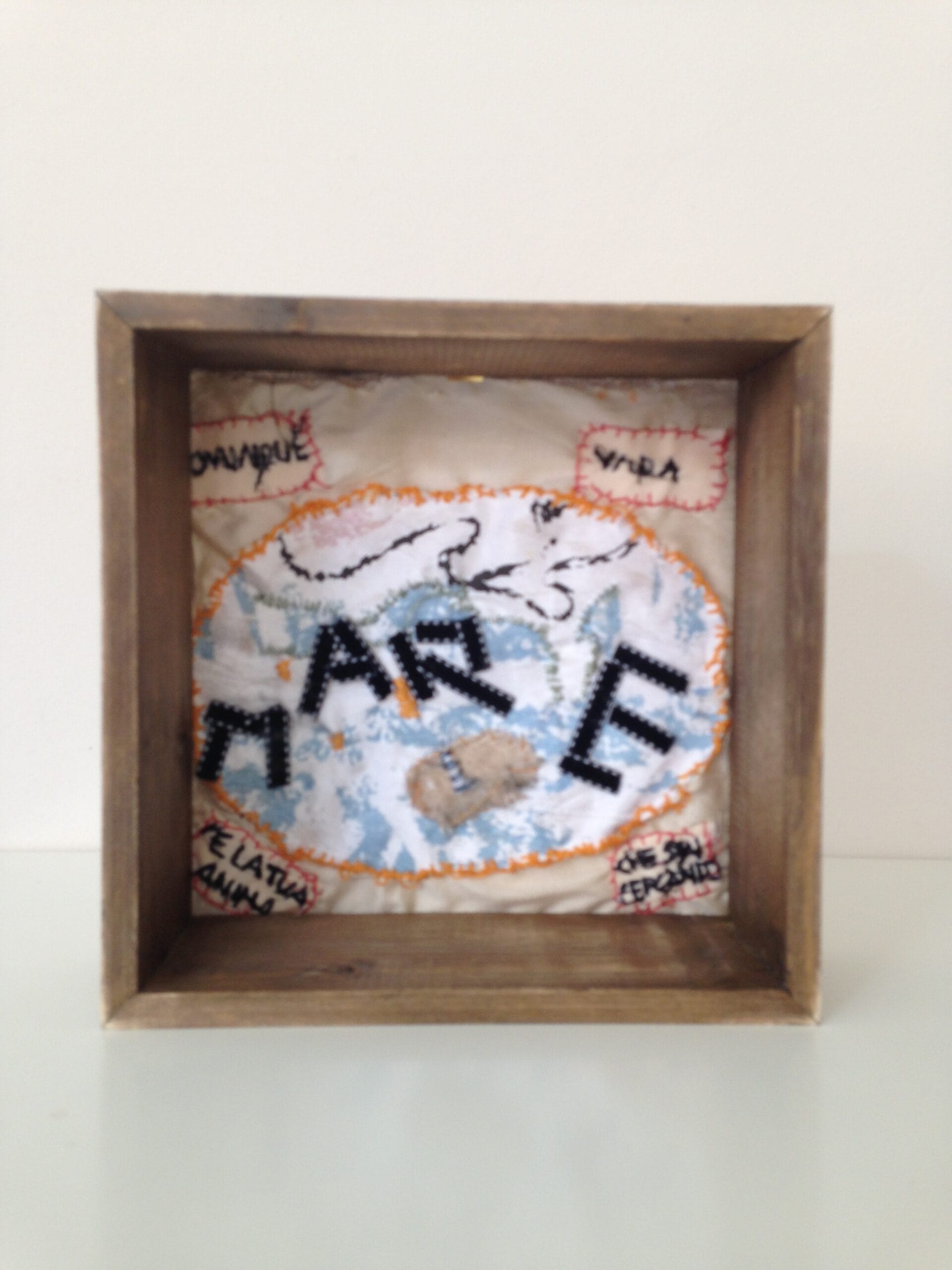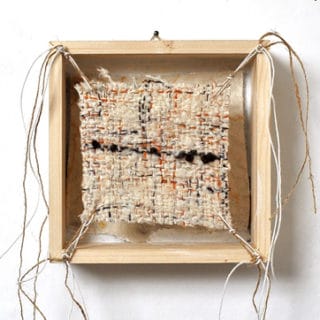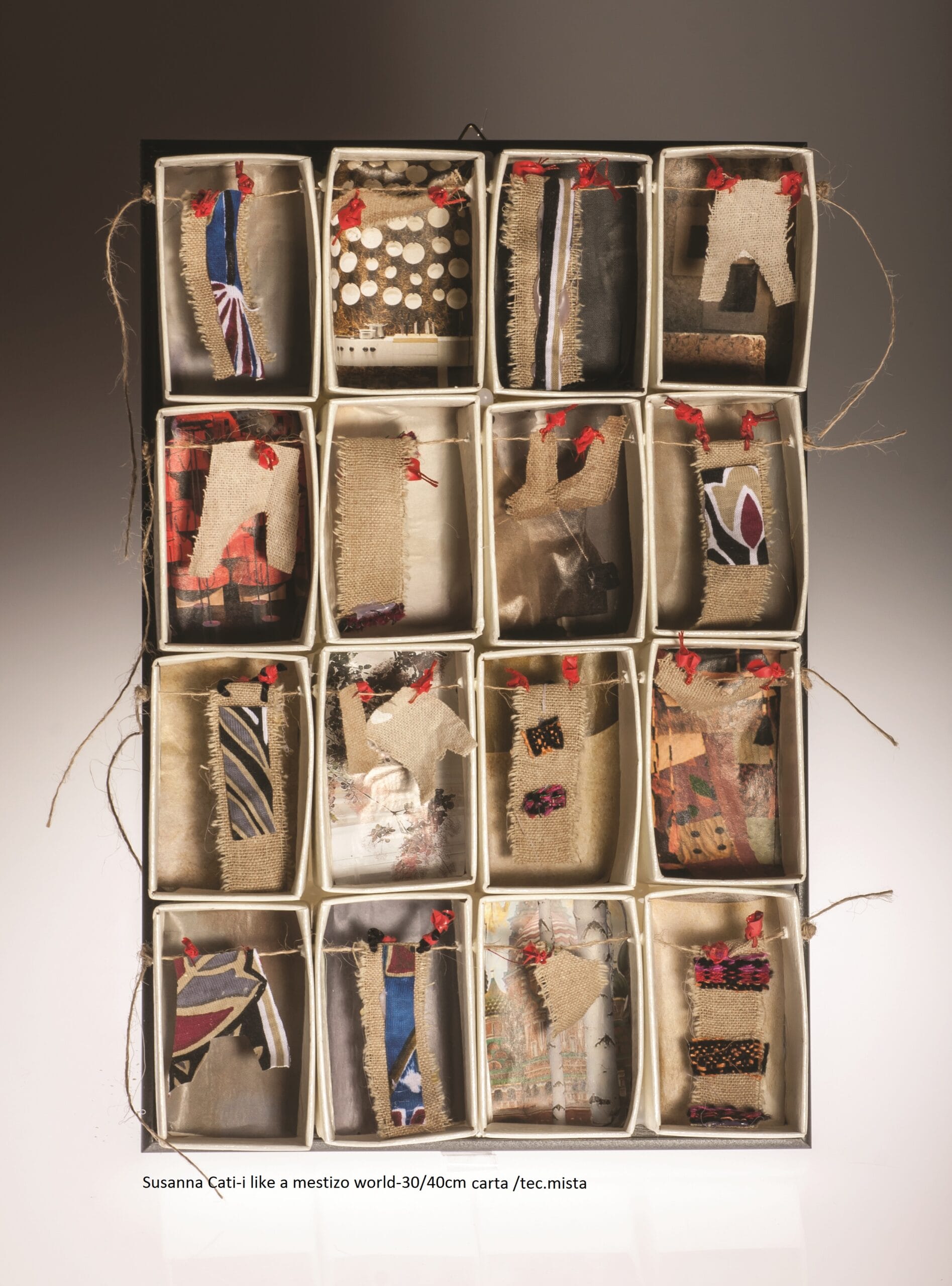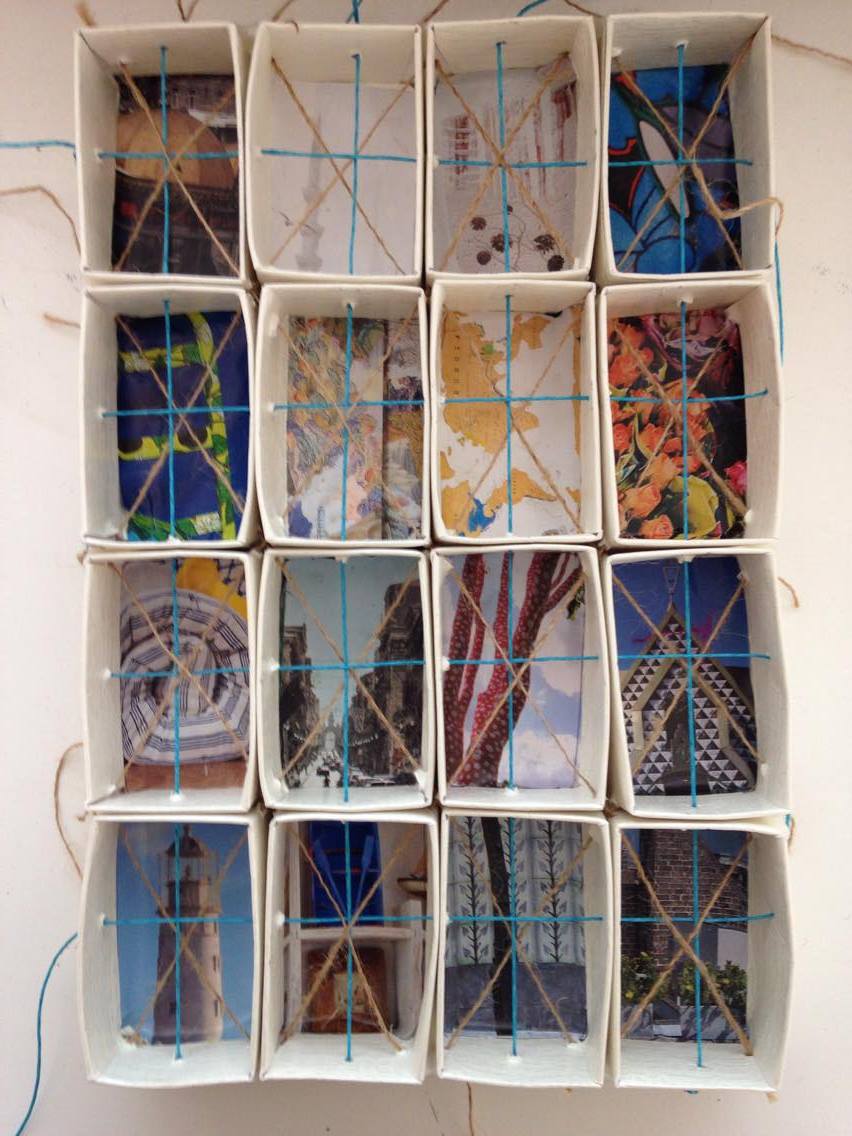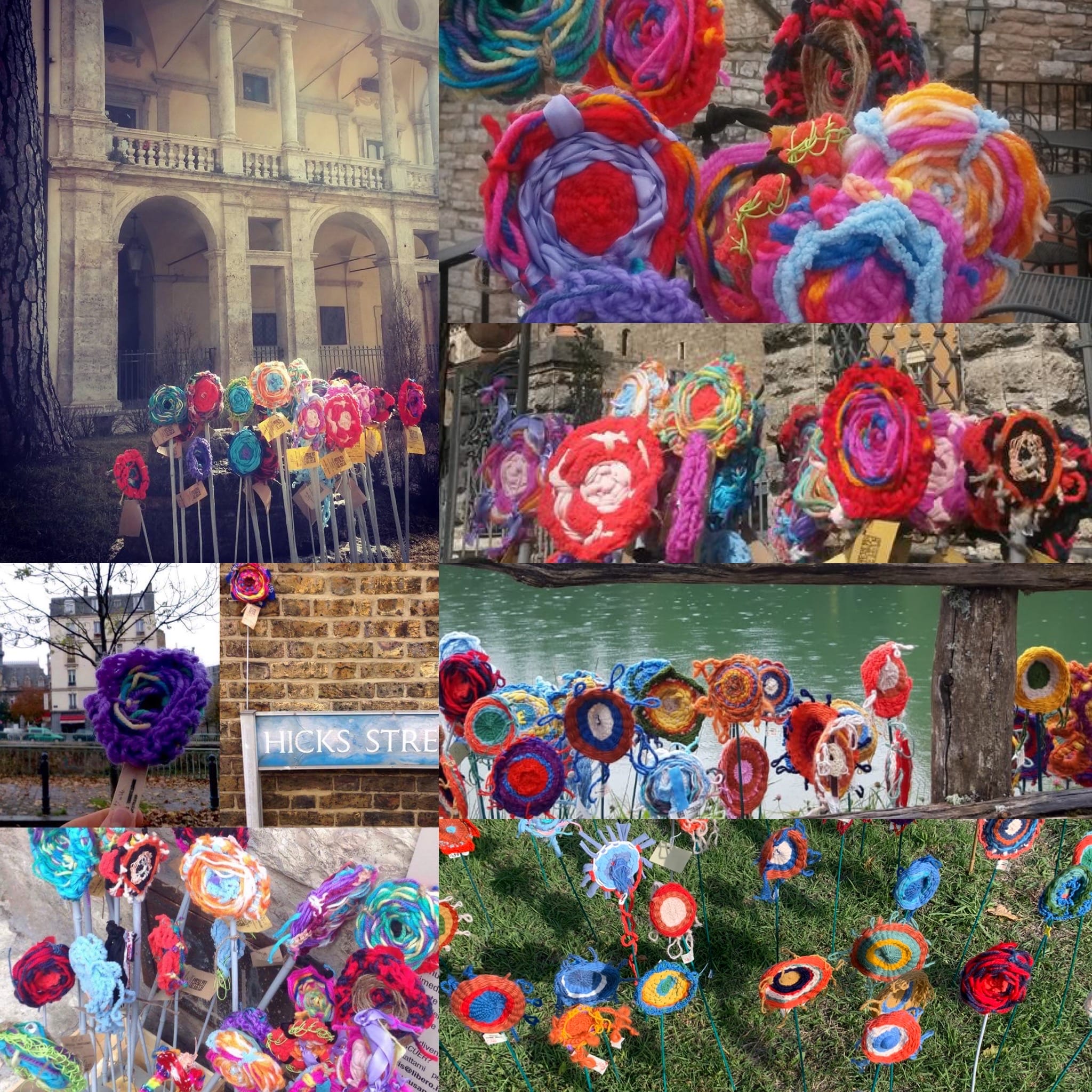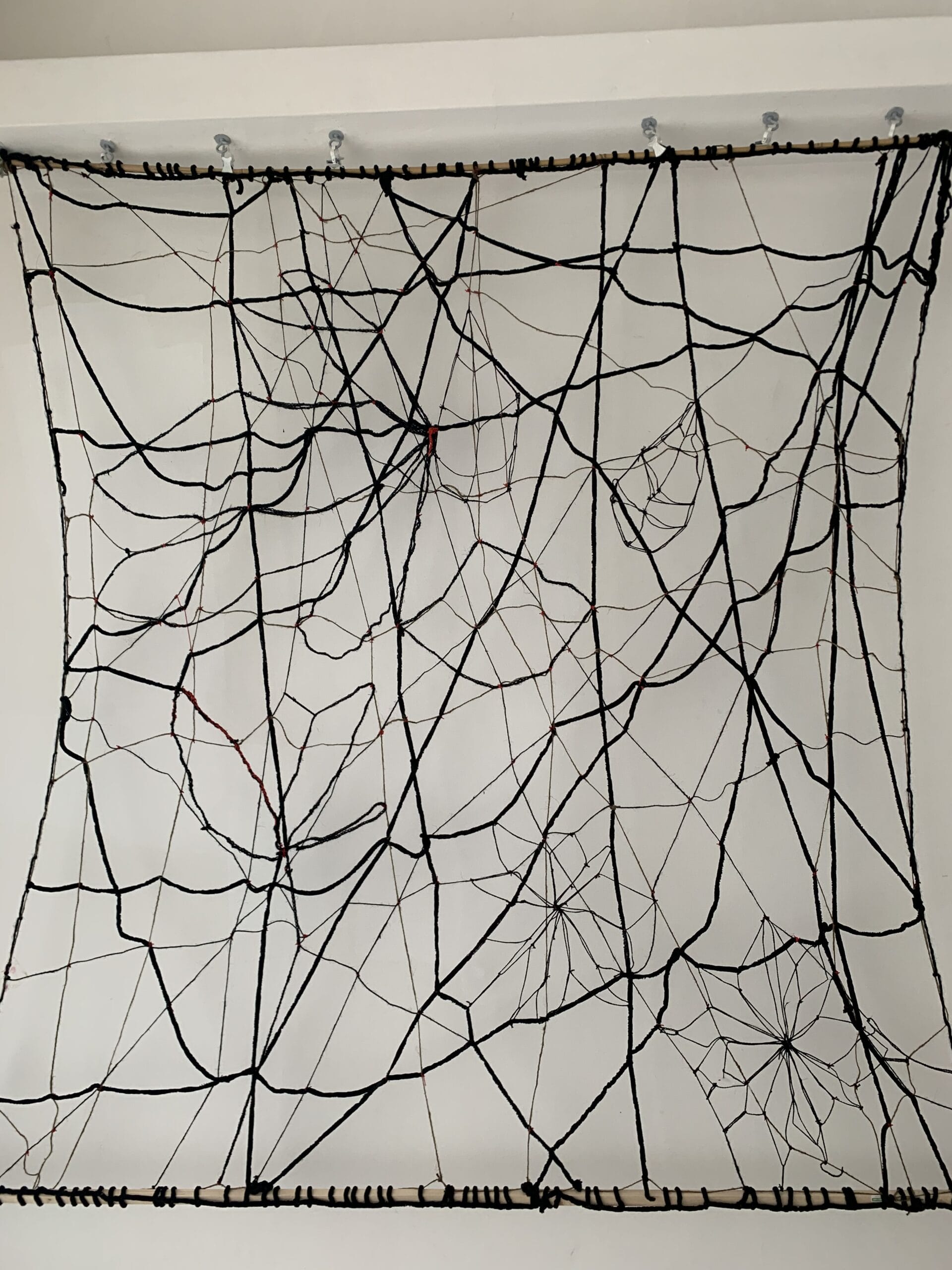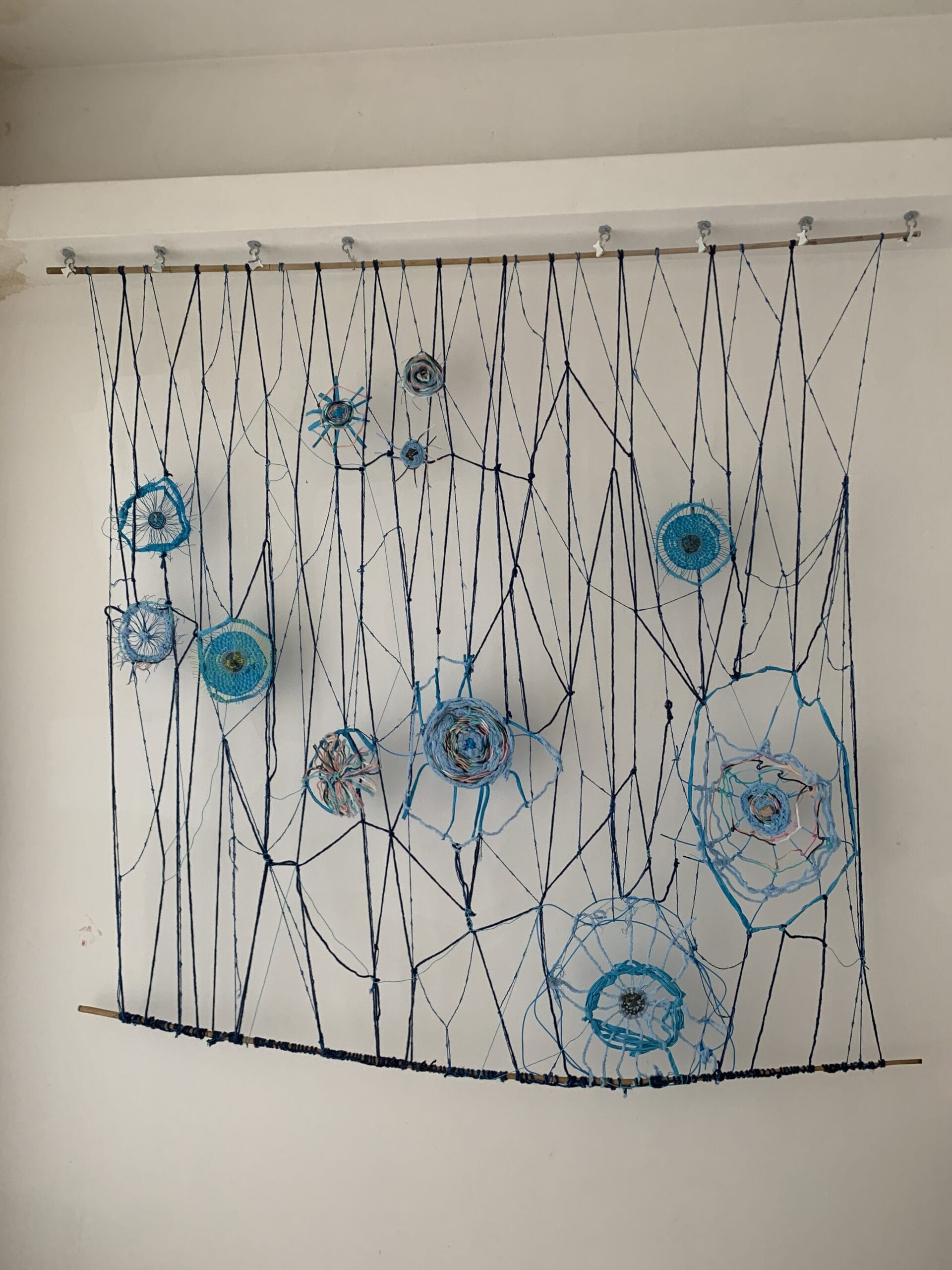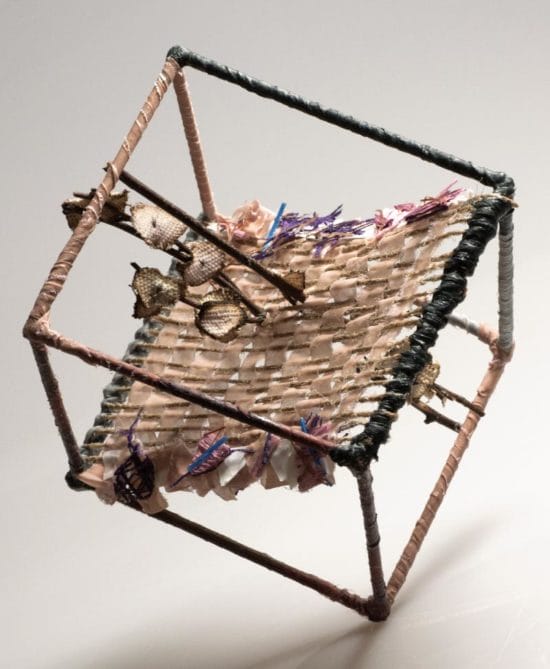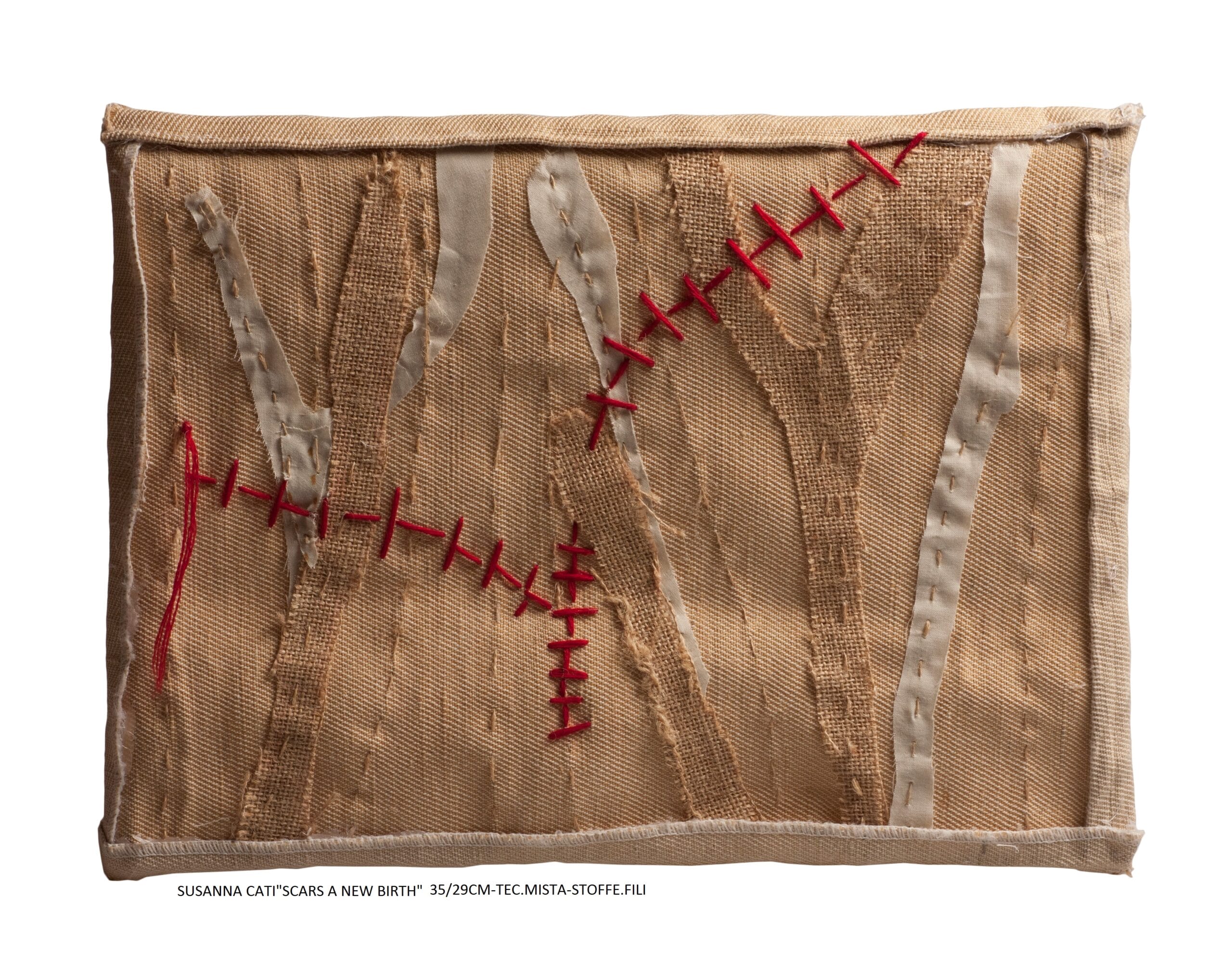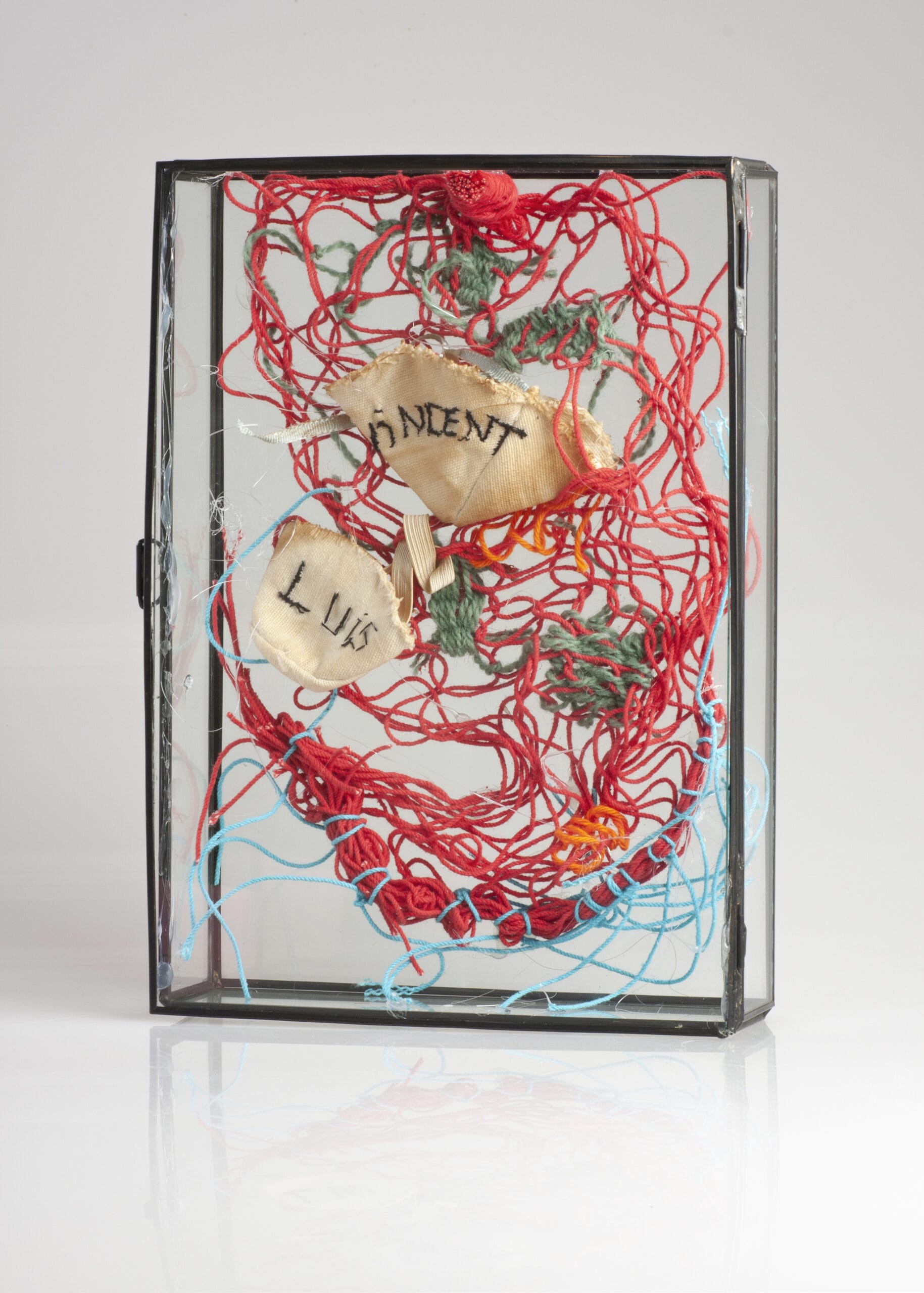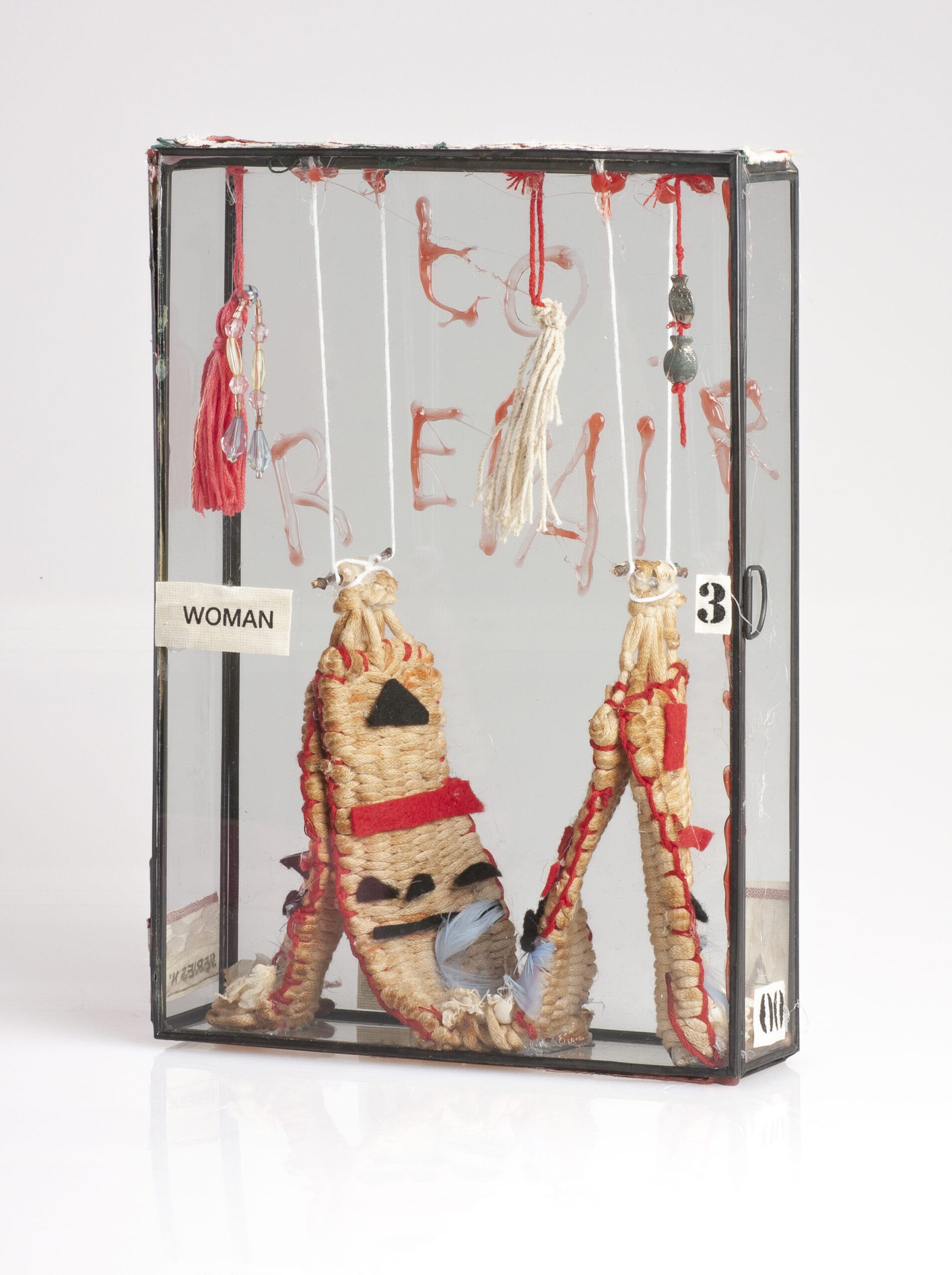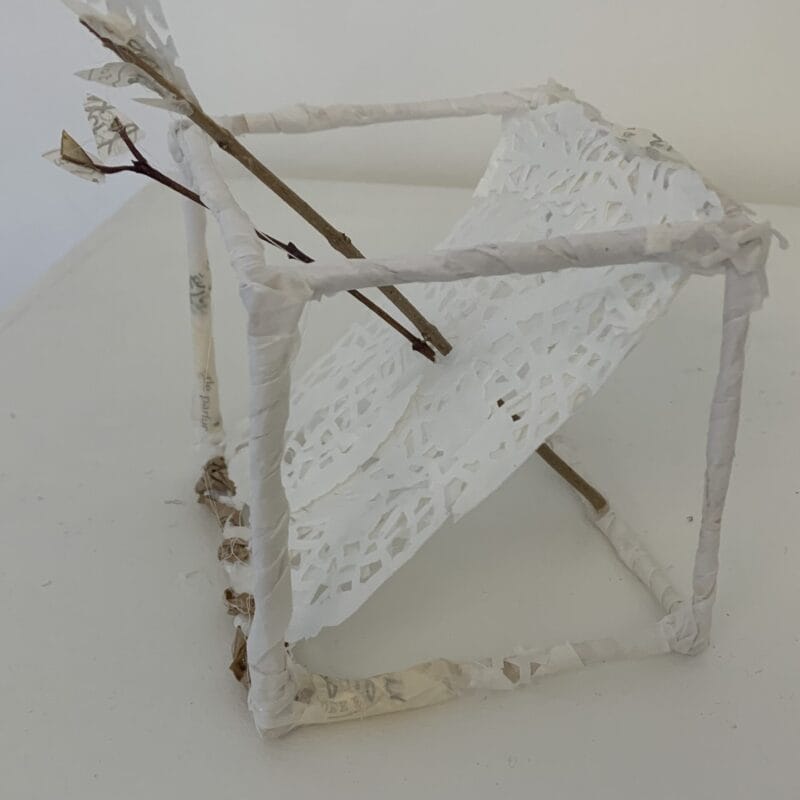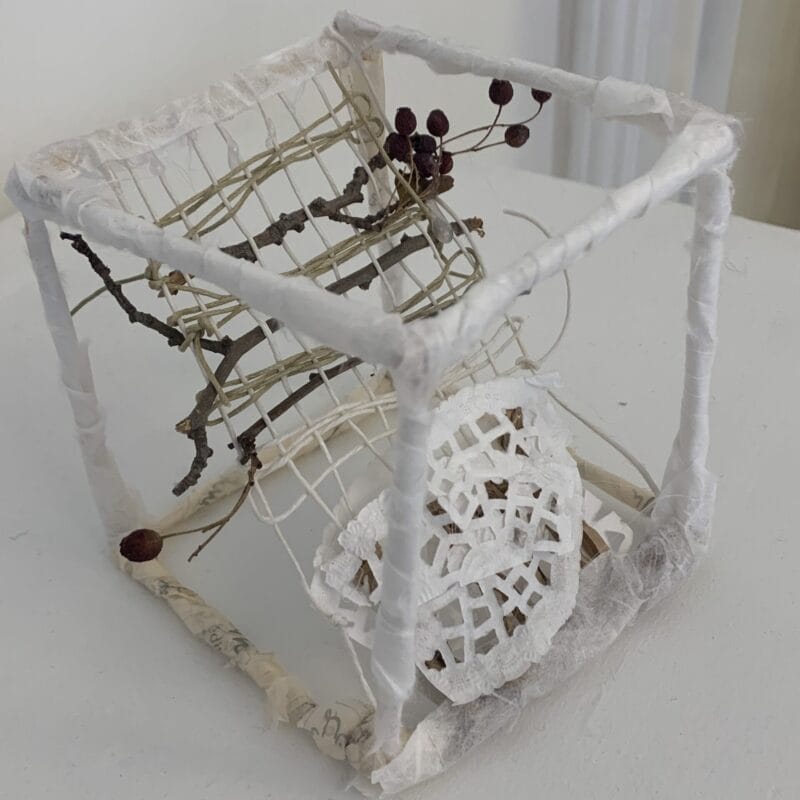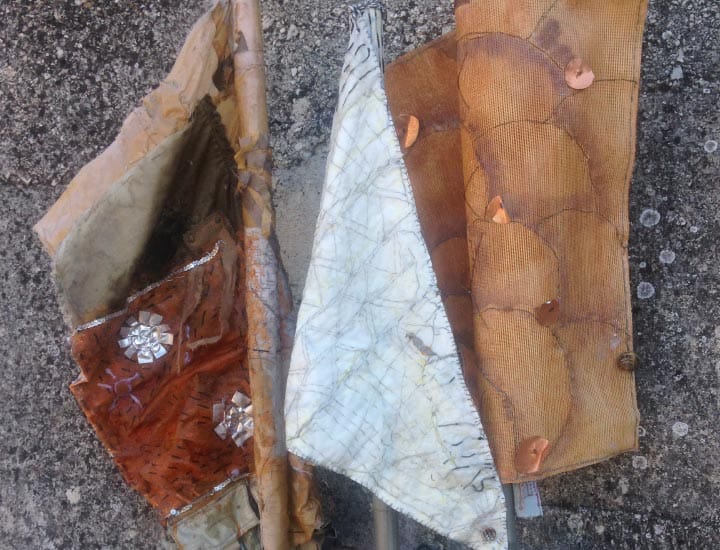INTERVIEW WITH SUSANNA CATI
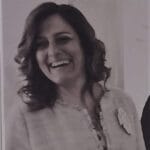
Multifaceted artist, Susanna Cati has worked in different creative fields, all strictly linked to the textile medium. From theater to Fiber Art, passing through design, dance, teaching, hers is a path that, through countless textile and material techniques, has led her to an experimentation that is always in progress, free from constraints, labels, limits. She has actively participated in exhibitions, contests and projects in Italy and Europe and for three years she has opened the space of her studio to other Fiber Artists.
Fashion, design, fiber art: a long career entirely between threads, fibers and fabrics. How did the textile medium become your expressive language?
I have thought a lot about this question, because my training has cultural roots linked to humanistic and purely artistic subjects, therefore closer to the history of art, drawing and painting. After the classical high school diploma, I thought I would enroll in architecture but then in that period, the eighties, of strong cultural decentralization, the Teatro di Roma organized wonderful theatrical workshops in the provincial cities of the Lazio region. It was there that I met Giovanni Licheri, assistant to Emanuele Luzzati (great set and costume designer) and that I fell in love with everything that gravitated behind the scenes of a theater: the sets, the costumes, the props. This unforgettable experience, that I also shared with my dearest friend at the time, immediately resulted in a work experience at the Teatro Argentina in Rome where, as children in kindergarten, we spent hours painting, sewing and building props with everything we were able to recycle (and recycling was not yet in fashion). Seduced by this experience, I enrolled in the Academy of Costume and Fashion, and from there many doors immediately opened to me in the world of theatrical costume and fashion.
Subsequently I deepened this interest in the textile world, spending a sabbatical year in Spello at the Norwegian weaver’s Live Morstad studio, where I learned all the techniques of manual loom weaving and more innovative techniques such as the tufting technique.
This continuous and rich training then flowed into the opening of my atelier where you can create and experiment with textile patterns, tapestries, carpets and much more.
The Eighties, far from being only a decade of superficiality, constitute for the artists who lived and worked in that feminist and post-feminist period an arena in which to claim the equal artistic dignity of practices considered marginal, but also to discuss important identity or gender issues. Therefore the embroidered stitch or the intersection of a weft with a warp can be charged with a subversive quality, a weapon through which you can claim your place not only in the field of art but also in society. The full redemption will then take place in the nineties when everything that is considered “minor” will find fertile ground in which to express itself.
In light of this, while continuing to use all artistic mediums such as painting or drawing, the choice of using the textile one becomes clear to me. Women have always collected, saved and recycled things, because by reusing them they took new forms, they had a secret language, they recreated a mysterious imaginary. The fabric, the thread, the fibers build a kind of archaeological reconstruction of a past experience, even mine, an album of memories to be protected.
What value and meaning does making art have for you and what role does artistic practice play in your life?
Today most people are only interested in what is useful, but I think like Kant: “beauty is art, it is without concept and without purpose”.
We have two ways of seeing things: an objective way that shows them as they are and the other, instead, that the immediate glance fails to capture. For me, art expresses that vision that the eye cannot capture only with the senses, which goes beyond, difficult to categorize and objectify. At first I was also fascinated by the function of a work, but recently I realized that always, even in functional pieces (carpets, tapestries, etc.), my approach is always the same – playful, free, almost childlike – which corresponds to my idea of the world and myself.So I would say that in my life, artistic practice totally intersects with my daily life, there is no separation; it is simply my way of being in the world and through this I seek happiness.
I really like Maria Lai’s phrase: “Art is like a puddle that reflects the sky, it can go unnoticed but the image of the sky always recomposes itself.”
You create your works through a plurality of techniques and materials in a continuous experimentation of both. Is this an aspect of your artistic research that is merely practical or is it an integral part of the meaning of your works?
I create my works with the most disparate techniques and with all possible materials, sometimes it is the technique that suggests a work, other times it is the material. I start from an idea that I almost always sketch on paper but then I let myself be seduced by the material that comes closest to that sketched idea. So I would say that the choice of technique and materials is an integral part of my works. I don’t think I really had a choice in my artistic path, things happen naturally according to a fatal sequence of cause and effect.Even the most ordinary things can become a reason for creativity, training the eye by educating the ability to “see” there is always the possibility of reinterpreting thoughts: “Materials are not important for what they actually are but for what they manage to express “(Louise Bourgeois)
I prefer thread and fabric in general, but if Japanese paper is functional to the effect I want, I end up using Japanese paper. This continuous search for techniques and materials is essential to my artistic career. Looking for a particular coat of a particular fiber or porosity in the paper is an integral part of the creative process.
From traveling modular installations such as the Emotional rescue project to site specific projects – for example the Muri proposed in Bologna last year – how do your works relate to the space in which they are set up?
The Emotional Rescue project was born by chance, expressive manipulative workshops on weaving with circular looms had been organized. I had prepared a workshop on the mandala, whereby the participants of the course wove a textile composition in the shape of a small circular mat with all the threads available. The experience had been intense and interesting and at the end of the course I had these small loom-woven works in my hands that I played with, they resembled colorful flowers, so I thought of attaching them to those wooden supports that florists use.The shape of the flower, its material and colors suggested to me the idea of a witness of emotion and beauty. I imagined this flower as a visual witness that would draw attention to a place that had lost its ancient beauty. Hence the birth of the “Emotional rescue” itinerant installation which, as you can see, comes from the object to become an idea. In this project, the physical space is also an integral part of the installation, because the person who buys a flower and places it in a chosen place to then photograph it, in turn creates a new image and interacts with the project. Over time, with Emotional Rescue we have created a virtual bulletin board where everyone could post their photos and their flowers, as well as taking the installation itself to various physical places (for example in Assisi, L’Aquila, Avella, etc.) .
In the case of the Muri, exhibited in Bologna at the Teatri di Vita, the creative process was the opposite. I started from the specific place and therefore from the space in which they would be set up with the additional thematic suggestion of the event which in 2020 focused on the concept of wall, in fact.
The walls that I designed and created for Bologna were very light, a sort of false intertwining net with wide open spaces to suggest to the observer my idea of imagining only “open” walls.
How are your works born? What are the sources of inspiration? What are the artists or movements that have influenced you the most? Which do you feel most similar to your research?
As I said, my works are never born in the same way but always start from a narration and a thought matured within me, before being a work they are a narrated thought and project.
Reading a book, meeting, walking alone in a beech forest, browsing through newspapers rather than old photos, everything is a source of inspiration and comes at the right time. The idea takes hold and the next step is to understand how to represent it. The creative and manufacturing process cannot ignore the experimentation of different materials, most of the times textile.
There are many artists who have influenced me, it is difficult to make a list; having been a teacher of art history, all the art at 360 degrees passed through me and pierced me. Many artists have influenced me, not necessarily fiberartists, I am thinking of Tamara de Lempika and Geogia O’Keeffe.
I was very interested in the Bauhaus movement, which was not just a school, but represented a fundamental point of reference for all the innovation movements in the field of architectural design and textile research (I am thinking of Annie Albers).
For years I continued to go to Ulassai to discover everything there was to discover about Maria Lai until I collaborated with the cooperative that had woven the famous goats for her. I loved the tapestries of Alighiero Boetti and the monumental works of Sheila Hicks excite me, I find the work of Hella Jongerius and Olafur Eliasson very interesting.
Kandinsky said that every work of art is the daughter of its time. We live in a time of great immateriality, yet there are many young artists who use fibers and fabrics as mediums. What, in your opinion, makes Fiber Art so relevant?
We live in a time of great immateriality and virtual reality has partially replaced real life, which is why the need to “reuse” matter grows alongside, and this is not just an environmental but a physical need. young artists approach Fiber Art because they want to “get their hands dirty” to “reuse” “recycle” “touch” and this with Fiber Art you can do it with all the possible freedom, and this is also the reason that makes it so relevant.
What are the differences in your design and creation path between a work of art and a design project?
The external vibrations and inspiration are similar, the transformation process between an idea and its realization changes. The design project mainly responds to the function it must have, it relates to the environment that will host it and is very often filtered by the client; in essence, the function is as important as aesthetics. The work of art comes from a mystical-physical need, you are much freer to express yourself because it responds only to yourself and to what you want to communicate.
How has this anomalous last year affected your work and research? And do you think that the changes triggered by the pandemic will lead to a different way of operating in the artistic and cultural sector?
After an initial and understandable disorientation, all I did was shut myself up in my studio and work, concentrated above all on time of depth, the Kairos. Naturally some projects have stopped, others have had the opportunity to develop through digital means, the whole sector has poured into the web and social networks and it is sure that this has helped us to feel less isolated. I believe that these changes triggered by the pandemic will continue to influence the artistic and cultural sector, but I also believe that returning to “presence” in museums, exhibitions, theater and music halls is essential.
A shelter, 2021, work in leaded glass box, dyed natural cotton and woven fabric, threads, felt, nylon, enamels, paper, photo credit B.Stavel
What project are you working on right now?
In this period I have worked in the field of design project for private clients, both in the textile field (customized carpets and tapestries) and for paper works. I designed and had all the ballet costumes made for the Swiss company Eremdance and for the Dance Contemporary “We might kiss” of the DNA Dance Company of Bologna.
I am currently finishing the cycle of works that will be part of the Kairos project, a project that I care a lot about because it has been my cultural and life artistic therapy in the long time of “confinement”. After the preview in Perugia, Kairos will be exhibited in Vienna in September.
Is there a project you would like to be able to shape in the short or long term?
I will continue to work in my studio because I could not do otherwise. In the short term, however, I plan to work with fiber art applied to the 3D dimension. In the long run, however, I would like to make myself available, perhaps even with other artists to create a choral project, something that not only has an aesthetic function but I would also say therapeutic in a place, a city and why not in a community. I would like to make evolution a mission.
